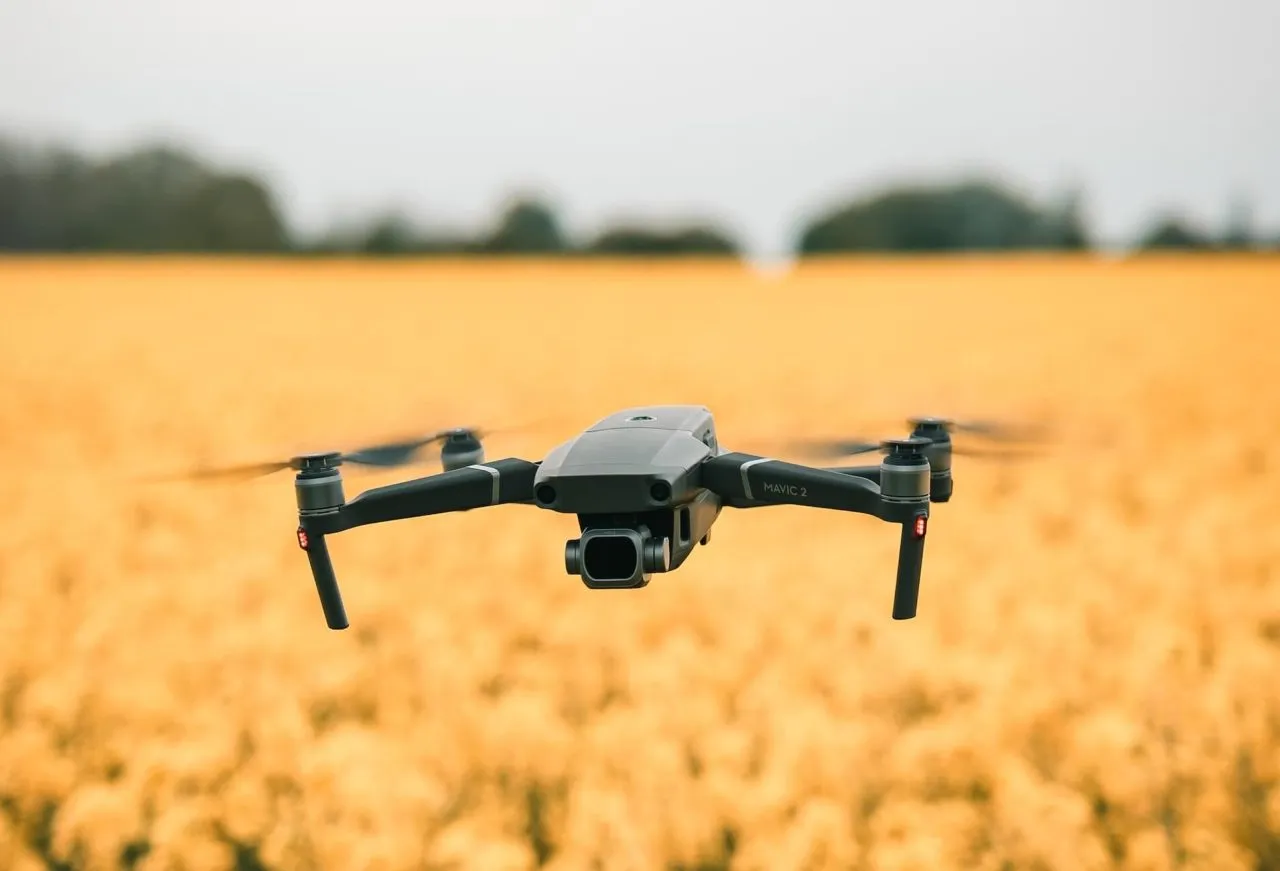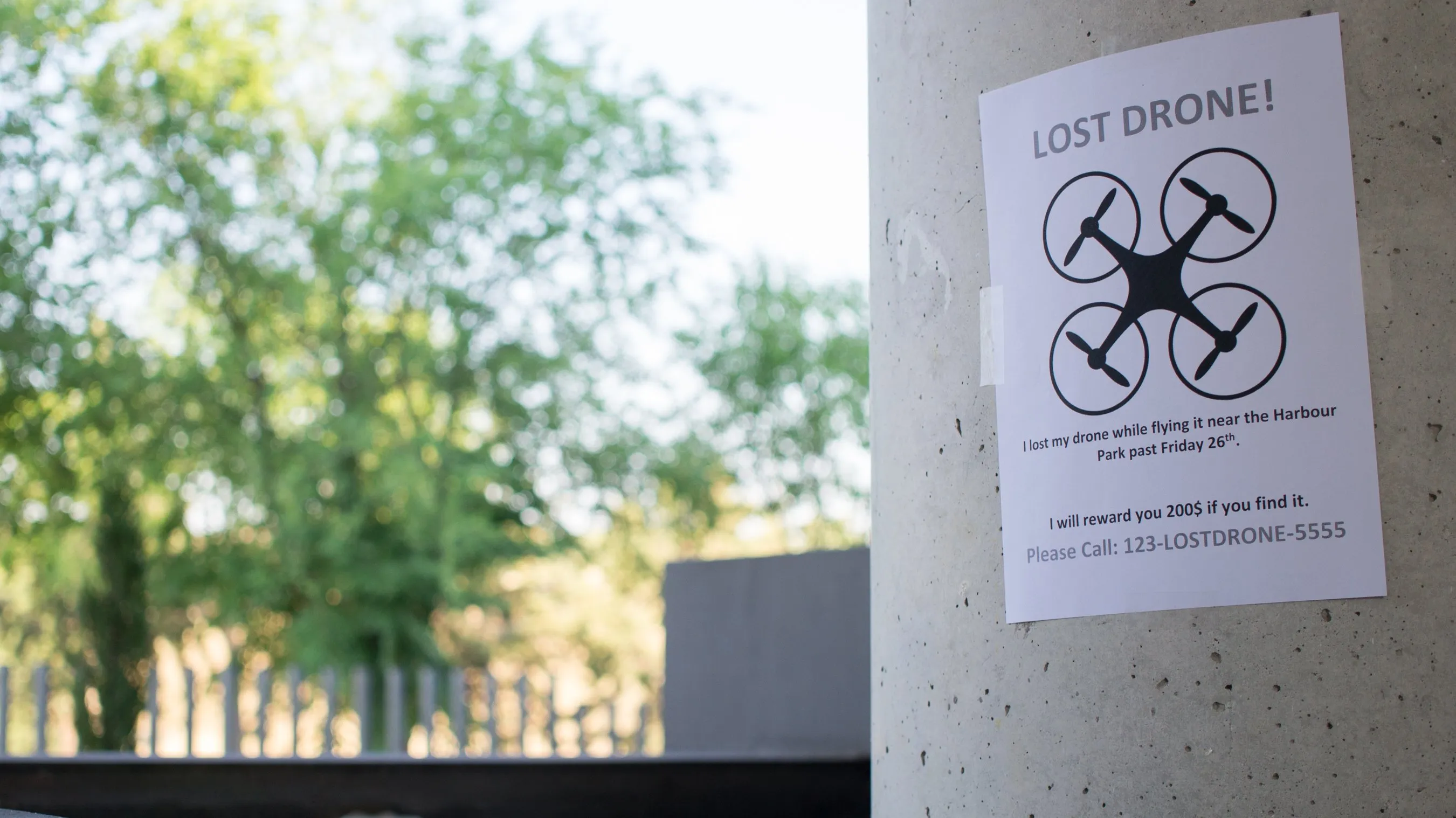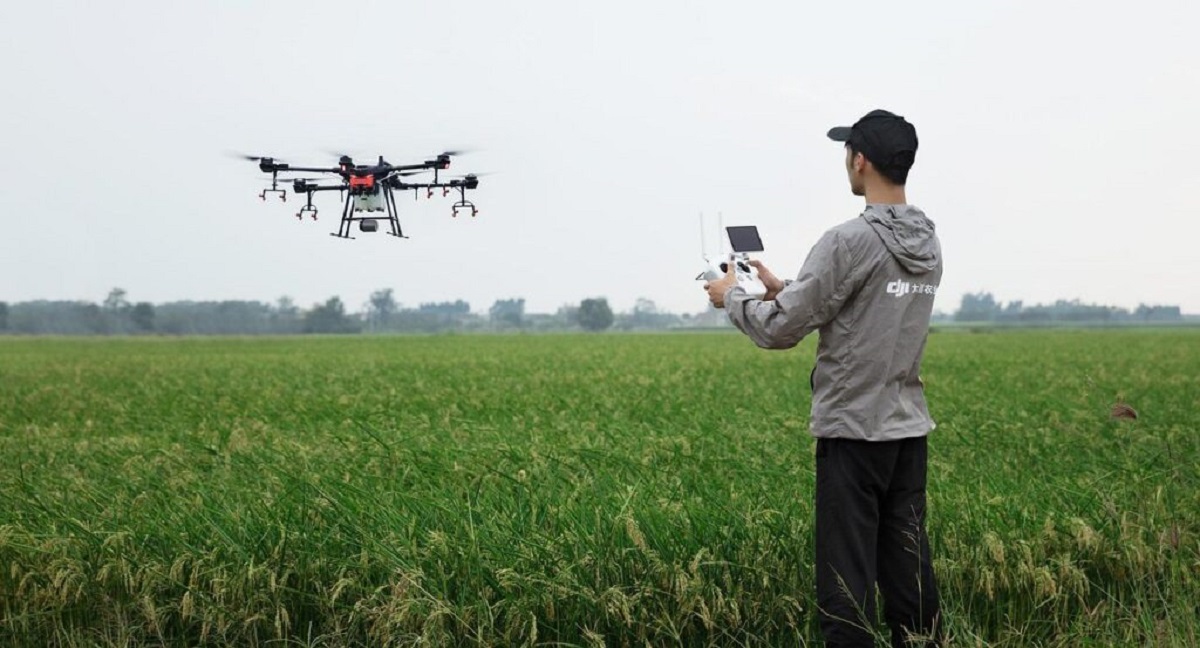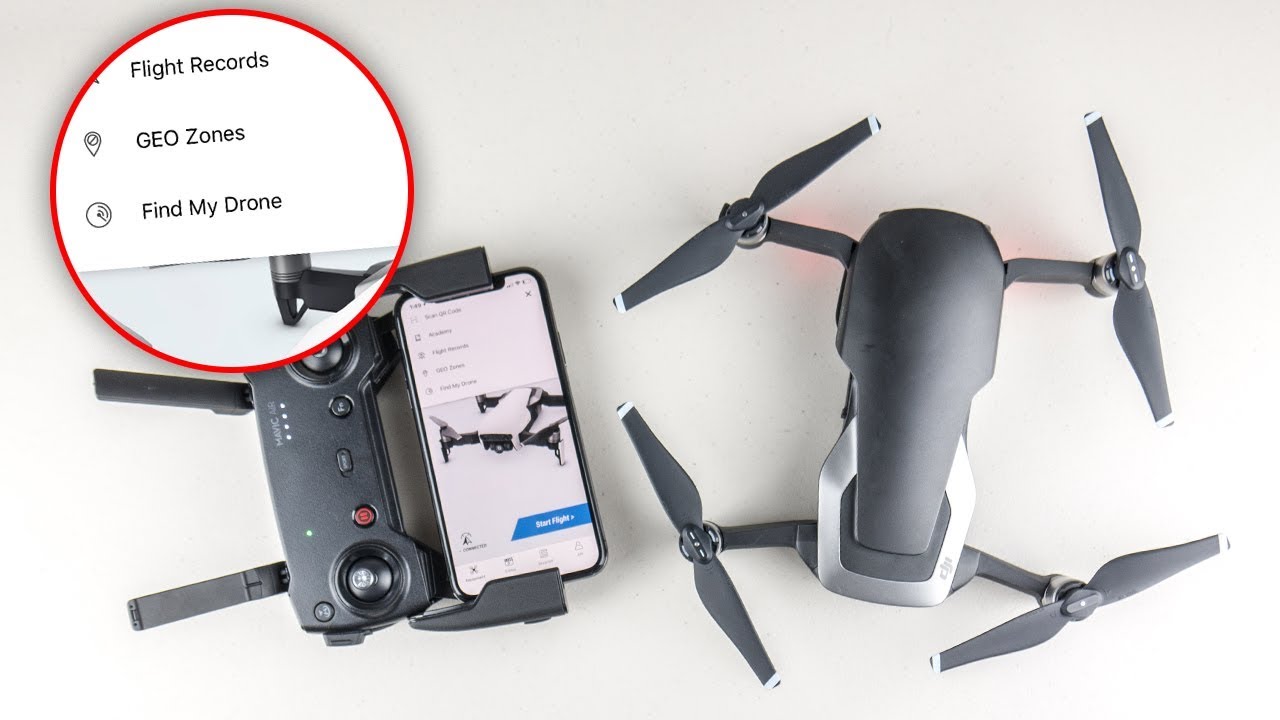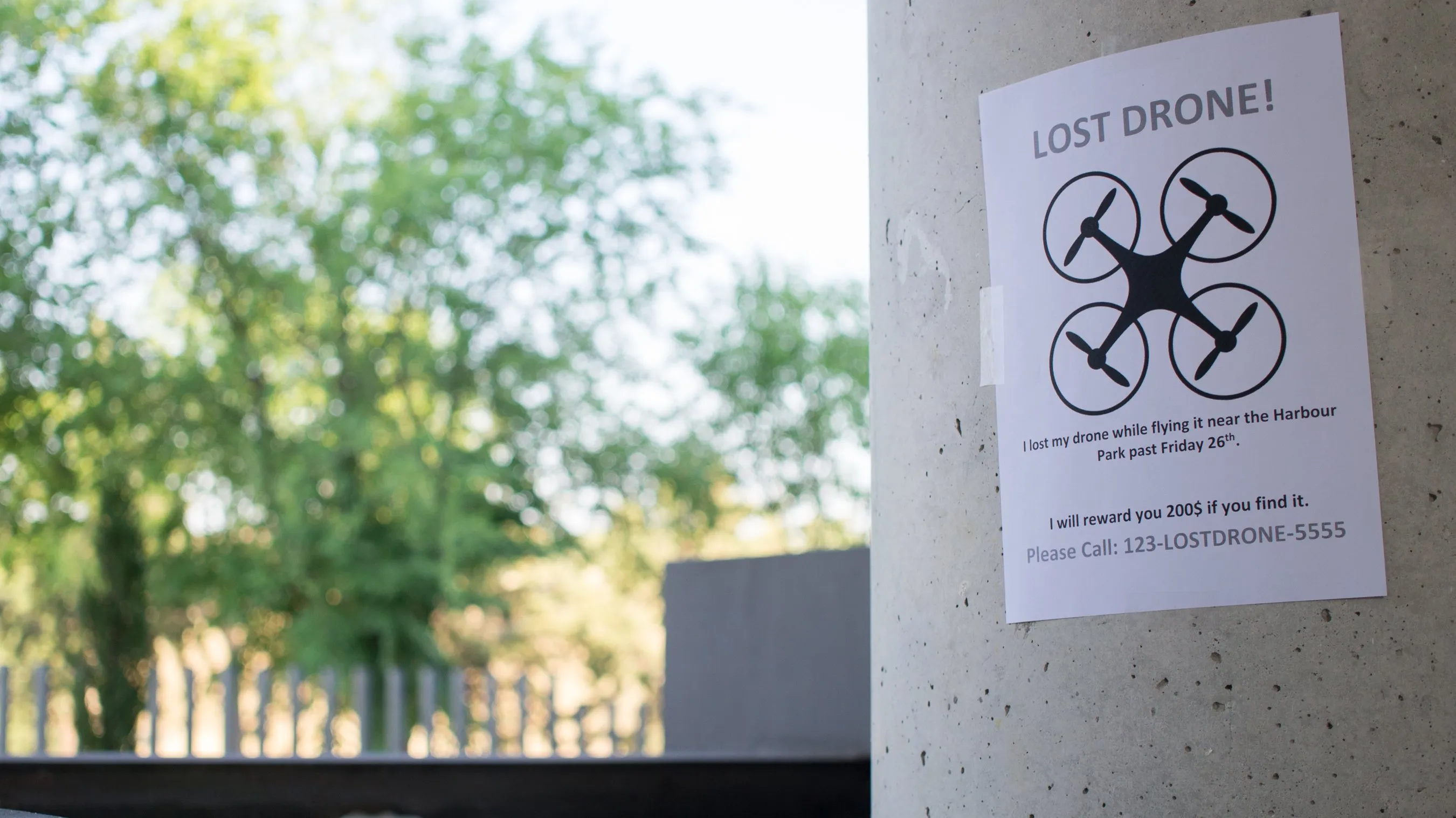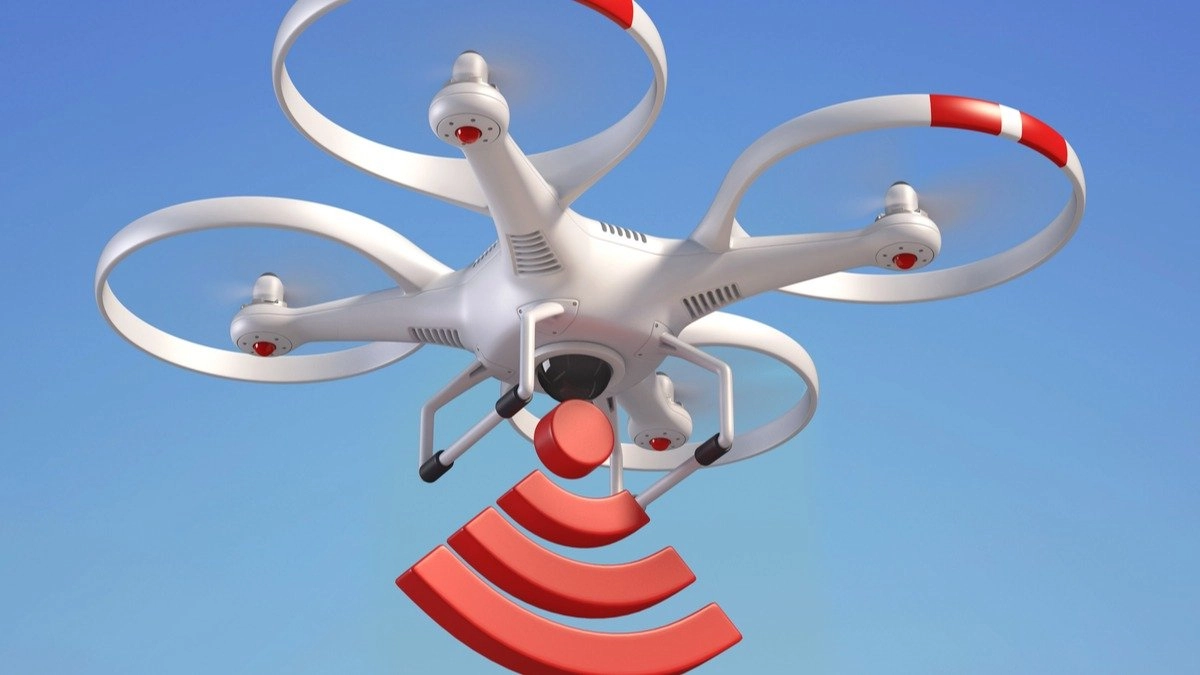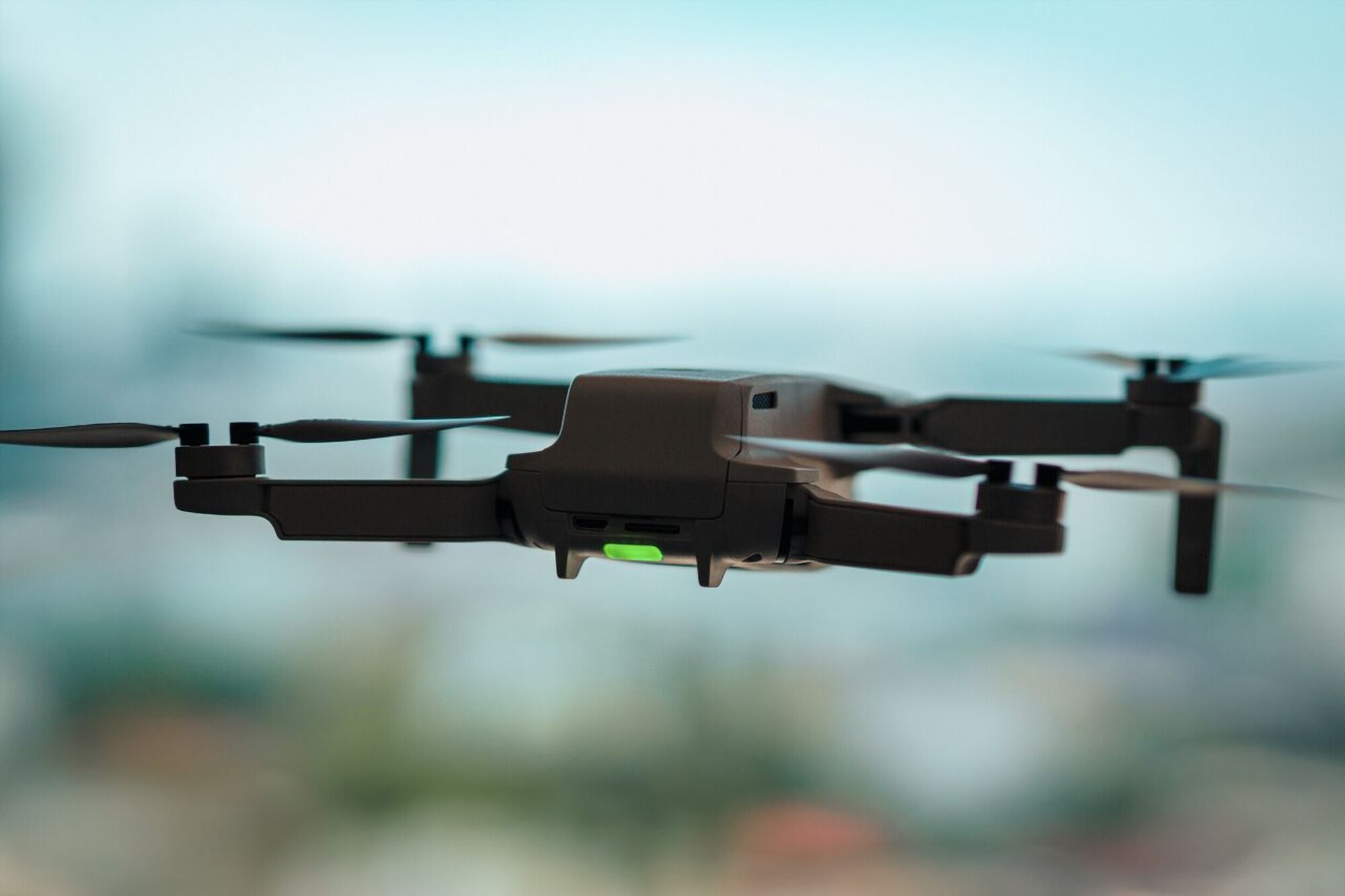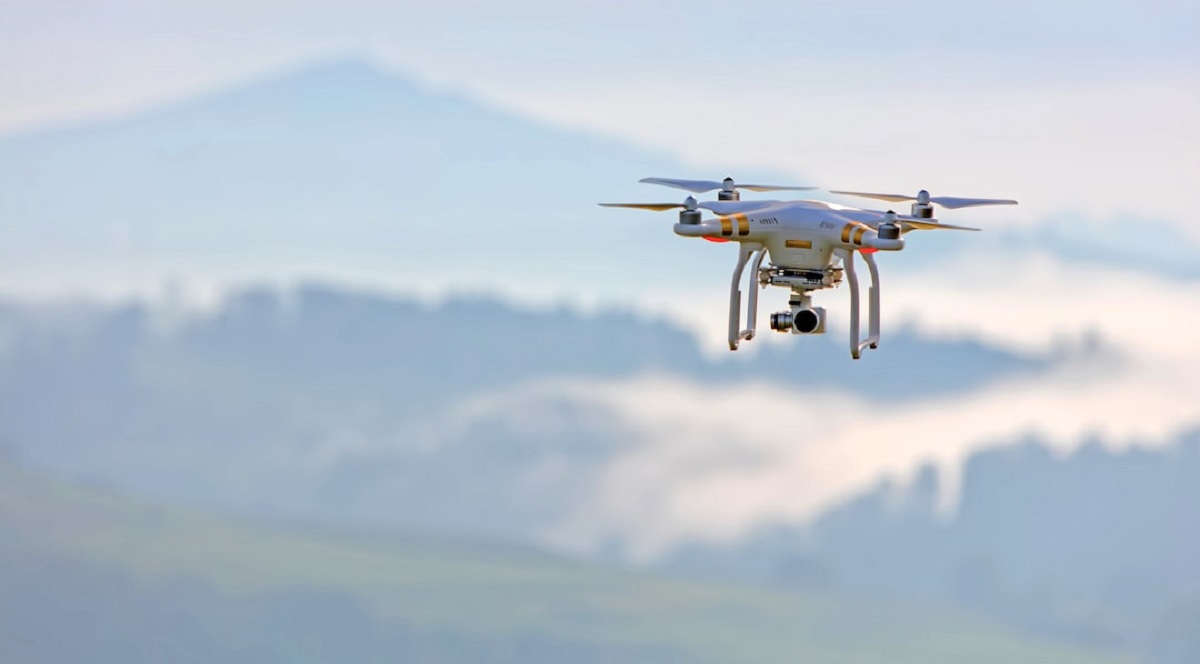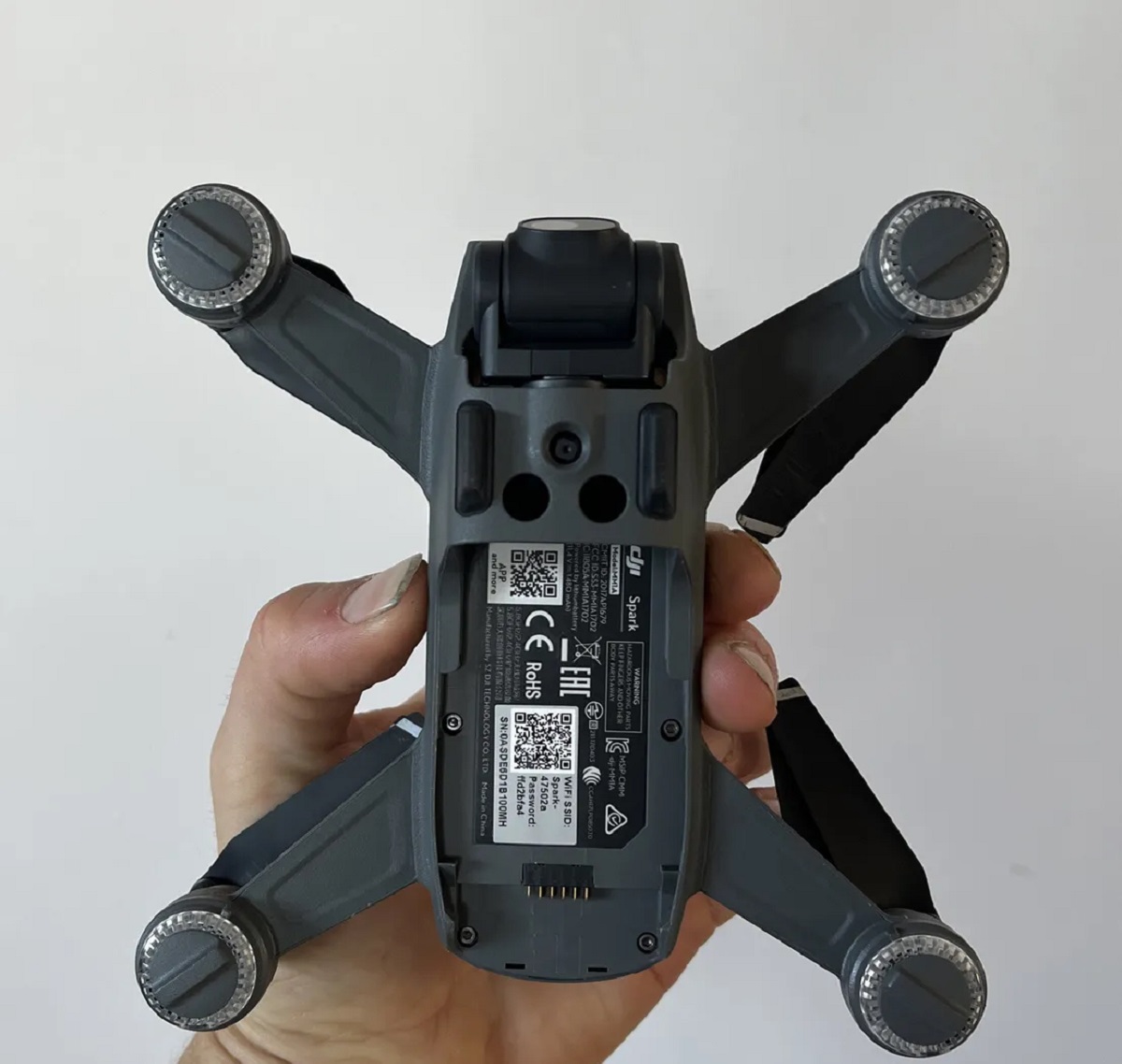Introduction
Welcome to the world of drones, where aerial photography, exhilarating flights, and capturing stunning footage are all within reach. Drones have become increasingly popular among hobbyists and professionals alike, offering a unique perspective and limitless creative possibilities. However, despite their advanced technology and capabilities, drones are not immune to the occasional mishap, including the heart-wrenching experience of losing one.
Losing a drone can be a frustrating and disheartening experience. Whether it’s due to a technical malfunction, strong winds, or simply misjudgment during flight, the feeling of watching your beloved drone fade into the distance is undoubtedly distressing. However, all hope is not lost. With the right strategies and tools, there is a good chance of finding your lost drone and bringing it back home.
In this article, we will explore various techniques and tips to help you locate a lost drone. From utilizing the drone’s GPS tracking and return to home feature to leveraging the Find My Drone app, we will provide you with a comprehensive guide to increasing your chances of recovering your precious flying machine. Additionally, we will discuss the importance of taking immediate action, searching for visual clues, and seeking assistance from local authorities or community members.
But prevention is always better than cure. Therefore, we will also share valuable insights on preventing future drone loss. By incorporating these measures into your drone flying routine, you can minimize the risk of ever having to go through the emotional rollercoaster of losing your drone again.
So buckle up, secure your propellers, and let’s dive into the world of finding lost drones.
The Importance of Finding a Lost Drone
Losing a drone may seem like a minor inconvenience to some, but understanding the importance of finding a lost drone goes beyond simply recovering an expensive piece of equipment. Here are a few reasons why finding your lost drone should be a top priority:
Financial investment: Drones can be a significant financial investment, with high-quality models often costing several hundred or even thousands of dollars. Losing a drone means losing that investment, which can be a significant blow to your budget. By finding your lost drone, you can potentially save yourself from having to replace it.
Valuable data and footage: Many drone users capture stunning aerial photographs and videos. Losing a drone means losing not only the physical device but also all the data and footage stored in it. Whether it’s personal memories, professional work, or creative projects, recovering your lost drone means retrieving the irreplaceable content it holds.
Ethics and environmental responsibility: As responsible drone owners, it is our duty to maintain ethical flying practices and environmental responsibility. Leaving a lost drone behind can contribute to littering and harm the environment. Furthermore, a lost drone may pose a hazard to wildlife or become a potential safety concern for unsuspecting individuals who stumble upon it. Locating and removing your lost drone ensures that you uphold your ethical responsibilities as a drone owner.
Personal attachment: Drones often hold sentimental value to their owners. They are more than just tools; they can represent a passion for aerial photography, an adventurous spirit, or even the memories of incredible moments captured from above. Finding a lost drone means reclaiming not only the physical device but also the emotional attachment associated with it.
Positive impact on the drone community: By taking active steps to find your lost drone, you contribute to fostering a positive drone community. Sharing your successful recovery stories and techniques can help others who may find themselves in a similar situation. By helping each other, we build a stronger and more supportive community of drone enthusiasts.
It is evident that finding a lost drone is more than just a matter of inconvenience or monetary loss. It is about preserving memories, minimizing environmental impact, upholding ethical responsibilities, and supporting a thriving community. So, let’s move forward and explore the steps to take after losing your drone to increase your chances of finding it.
Initial Steps to Take After Losing Your Drone
Discovering that your drone is lost can be both disheartening and overwhelming. However, it’s crucial to remain calm and take immediate action to maximize your chances of locating and recovering your drone. Here are some initial steps to take after losing your drone:
1. Mark the last known location: As soon as you realize your drone is lost, mark the spot where you last saw it. This will serve as the starting point for your search efforts. Take note of any landmarks or distinctive features to help you reference the location later on.
2. Check the drone controller: Examine the drone controller to see if there are any indicators or notifications that might provide clues about the drone’s status, such as low battery warnings or error messages. This information could help you determine possible directions or distances the drone might have traveled.
3. Scan the immediate area: Conduct a visual search of the surrounding area. Look up at the sky and scan nearby trees, rooftops, or tall structures where your drone might have gotten tangled or landed. Don’t forget to check the ground as well, as the drone might have made a safe landing after navigating through obstacles.
4. Utilize the drone’s GPS coordinates: If your drone is equipped with GPS tracking, retrieve the last known GPS coordinates from the controller or the drone’s connected app. These coordinates can be helpful in narrowing down the search area, providing you with a starting point to focus your efforts.
5. Use a drone tracking app: There are several drone tracking apps available that can help you locate a lost drone. These apps utilize GPS technology and provide real-time location data, enabling you to track the drone’s movements and determine its current position. Install and activate the app on your smartphone or tablet, and follow the instructions to connect it to your drone.
6. Notify local authorities and community members: If your search efforts yield no results, it may be necessary to involve local authorities and community members. Report the incident to the local police department or relevant authorities as they may have received information about a found drone. Additionally, consider reaching out to your community via social media groups or local forums to enlist the help of fellow drone enthusiasts or concerned residents.
7. Document the details: Keep a record of all the actions you’ve taken, including the date, time, and location of the incident, any relevant GPS coordinates, and the steps you’ve taken so far. This documentation can be valuable for insurance claims or if you decide to seek professional assistance in locating your lost drone.
By following these initial steps, you can lay the foundation for a comprehensive search operation. In the next sections, we will explore advanced techniques to utilize the drone’s GPS tracking, leverage the return to home feature, and employ the Find My Drone app to increase your chances of finding your lost drone.
Utilizing the Drone’s GPS Tracking
If your drone is equipped with GPS (Global Positioning System) technology, you have a significant advantage in locating a lost drone. GPS tracking allows you to pinpoint the drone’s location with accuracy, making the search process more efficient. Here’s how you can utilize the drone’s GPS tracking to increase your chances of finding your lost drone:
1. Retrieve GPS coordinates: Access the controller or the drone’s connected app to retrieve the last known GPS coordinates. These coordinates will provide you with a starting point for your search. Enter the coordinates into a navigation app on your smartphone or a handheld GPS device to guide you to the general vicinity of where the drone was last located.
2. Use a GPS tracking device: If your drone does not have built-in GPS, you can attach a small GPS tracking device to it. These devices are lightweight and can easily be fastened to the drone. They work by transmitting the drone’s location in real-time to your smartphone or computer. This allows you to track its movements and determine its current position, even if it is out of sight.
3. Follow the drone’s flight path: If you have access to the flight log, examine the recorded flight path. This information can provide valuable insights into the drone’s trajectory and the direction it may have traveled after being lost. Follow the flight path on a map or satellite imagery to identify potential areas where the drone could be located.
4. Perform systematic searches: Once you have the approximate location based on the GPS coordinates or flight path, conduct systematic searches in the area. Use visual cues and landmarks to navigate through the terrain. Pay close attention to trees, dense foliage, bodies of water, or any other potential obstacles where the drone might have become entangled or landed.
5. Utilize geofencing data: Geofencing is a feature available on some drones that allows you to set virtual boundaries within which the drone is allowed to fly. If your drone has geofencing enabled, review the data to determine whether the drone may have exceeded the set boundaries before it was lost. This can give you additional information about the drone’s potential location.
6. Consider altitude differences: Drones can gain altitude during flight, especially when encountering obstacles. Keep in mind that the drone may have climbed higher after losing contact, meaning it could be located at a different altitude level than your initial search area. Adjust your search strategy and explore higher elevations if necessary.
7. Use signal strength indicators: Some drone controllers have signal strength indicators that show the strength of the connection between the controller and the drone. If you still have a connection but have lost visual contact, use the signal strength as a guide to narrow down the search area. Move in the direction where the signal strength is stronger, as it indicates that the drone is likely to be closer in that direction.
By utilizing the drone’s GPS tracking capabilities, you can narrow down the search area and increase your chances of finding your lost drone. However, if you are unable to locate the drone using these techniques, don’t lose hope. In the next section, we will explore another feature that can assist in the search effort: the drone’s return to home function.
Using the Drone’s Return to Home Feature
One of the most useful features that many drones come equipped with is the return to home (RTH) function. This feature allows the drone to automatically fly back to its takeoff point or a predetermined location. When a drone is lost, activating the RTH feature can significantly increase the chances of locating and recovering it. Here’s how you can utilize the drone’s return to home function:
1. Check the RTH settings: Familiarize yourself with the RTH settings and options specific to your drone model. Access the controller or the drone’s connected app to ensure that the RTH function is enabled and set up correctly. Some drones allow you to customize the RTH altitude, speed, and landing spot, so review these settings as well.
2. Activate the RTH function: If you lose contact with the drone or it goes out of sight, activate the RTH function immediately. Most drones have a dedicated RTH button on the controller, or you can initiate the return manually through the app. The drone will then begin its journey back to the designated destination.
3. Monitor the drone’s progress: Keep a close eye on the drone’s movements during its return flight. If you still have a connection with the drone, the controller or app should display real-time data such as distance, altitude, and speed. Use this information to track the drone’s progress and ensure that it is moving in the expected direction.
4. Look out for visual and audible cues: Some drones emit flashing lights or make beeping sounds during the return flight as visual and audible cues for you to locate them. Pay attention to these signals, as they can assist in spotting the drone, especially in low light conditions or densely populated areas.
5. Prepare for the landing: As the drone nears its destination, be prepared for its landing. Make sure the landing spot is clear of any obstructions and secure enough to accommodate the drone’s size. If you don’t have a designated landing pad, choose an open and safe area where the drone can safely touch down without the risk of damage.
6. Adjust landing location if needed: In some situations, the predetermined landing spot may not be accessible or suitable for the drone’s return. If this is the case, use the controller or app to adjust the landing location to a more accessible area while ensuring it is as close as possible to the original takeoff point.
7. Utilize a compass or GPS tracker: If your drone has a built-in compass or GPS tracker, use it to accurately determine the direction and distance of the drone’s return flight. This information can guide you in positioning yourself at the best vantage point to observe the drone’s landing.
Utilizing the drone’s return to home feature can be a game-changer when it comes to finding a lost drone. Remember to familiarize yourself with this capability before flying and always ensure that it is properly calibrated and set up. In the next section, we will explore an additional tool that can assist in the search for a lost drone: the Find My Drone app.
Using the Find My Drone App
The advancement of technology has led to the development of various apps designed specifically to help drone owners locate their lost devices. One such app is the Find My Drone app, which can be a powerful tool in your search efforts. Here’s how you can use the Find My Drone app to increase the chances of finding your lost drone:
1. Research and download the app: Take the time to research and find a reputable Find My Drone app that is compatible with your drone model. Check reviews, ratings, and app features to ensure its reliability and effectiveness. Once you’ve chosen the app, download and install it on your smartphone or tablet.
2. Connect the drone to the app: Follow the instructions provided by the app to connect your drone to the app. This typically involves pairing the drone with your mobile device via Wi-Fi or Bluetooth. Once connected, the app will be able to communicate with your drone and provide real-time location data.
3. Activate the tracking feature: Once the drone is connected to the app, activate the tracking feature. This feature allows the app to continuously monitor the drone’s location and movement, providing you with up-to-date information on its whereabouts. Ensure that the tracking feature is enabled before flying your drone to maximize its effectiveness in a lost drone situation.
4. Utilize the app’s map interface: Most Find My Drone apps have a map interface that displays the drone’s location in real-time. Familiarize yourself with the app’s map interface and take advantage of its features, such as zooming in/out, panning, and switching between satellite and street views. This will help you navigate and visualize the drone’s location accurately.
5. Track the drone’s movements: Use the app to track the drone’s movements as you conduct your search. If your drone is still within range and connected to the app, its location will be updated in real-time on the map. This allows you to follow its path, adjust your search direction, and increase your chances of locating the drone.
6. Utilize additional features: Depending on the app, there may be additional features available to assist you in finding your lost drone. These features can include signal strength indicators, beeping sounds, flashing lights, or even virtual reality (VR) mode that provides a first-person view of the drone’s surroundings. Experiment with these features to see which ones prove most helpful in your search efforts.
7. Collaborate with the app community: Many Find My Drone apps have a community aspect, allowing users to share information and collaborate in the search for lost drones. Engage with the app community by sharing details of your lost drone and any updates on its whereabouts. This collaborative effort can provide additional support and potentially lead to the successful recovery of your drone.
The Find My Drone app can be an invaluable tool in the quest to locate a lost drone. Make sure to explore its features, stay updated with the latest app version, and utilize it alongside other search techniques to effectively track and recover your missing drone. In the next section, we will discuss how to search for visual clues in the surrounding area to aid in locating the lost drone.
Searching for Visual Clues in the Surrounding Area
When attempting to find a lost drone, it’s essential to utilize all available resources, including the power of observation. Searching for visual clues in the surrounding area can provide valuable insights and increase the likelihood of locating your lost drone. Here are some steps to follow when searching for visual clues:
1. Assess the flight path: Start by retracing the flight path of your drone in your mind. Visualize the trajectory before it went out of sight. This can help you identify potential areas where the drone might have encountered obstacles or veered off course.
2. Look for signs of impact: Inspect any nearby trees, buildings, or structures for signs of impact or damage. If your drone collided with an object, there may be visible clues such as broken branches, scuff marks, or pieces of the drone left behind.
3. Scan for reflective surfaces: Drones often have reflective elements or shiny surfaces that can catch the sunlight. Scan the area for any glimmers or reflections that could indicate the presence of your lost drone. Pay attention to windows, bodies of water, or even metallic objects that could reflect light.
4. Use binoculars or a zoom lens: If you have binoculars or a camera with a zoom lens, use them to scan the area from a distance. This can help you spot the drone even if it is hidden or lodged in a hard-to-reach spot. Explore areas where it may have become entangled or landed, such as treetops, rooftops, or cliffs.
5. Observe from elevated viewpoints: If possible, seek elevated viewpoints such as hills, rooftops, or balconies to get a better vantage point. This elevated perspective can expand your visibility and make it easier to spot the drone’s distinct shape or any unusual objects that could indicate its location.
6. Look for contrasting colors: Drones often stand out against natural backgrounds due to their contrasting color schemes. Scan the environment for any colors that contrast with the surroundings, including bright or metallic colors that are distinct from the natural vegetation or structures.
7. Engage local residents or authorities: Speak to local residents or authorities who may have witnessed the drone’s descent or have information about its whereabouts. They may have noticed something unusual or have seen the drone land and can provide valuable information for your search efforts.
Searching for visual clues requires patience and a keen eye for detail. Remember to stay aware of your surroundings, keep a mental note of potential landmarks or distinct features, and document any findings or observations. These visual clues can be instrumental in narrowing down the search area and ultimately leading you to your lost drone.
Next, we will explore the benefits of seeking assistance from local authorities or community members in the search for a lost drone.
Asking for Assistance from Local Authorities or Community Members
When all else fails in the search for a lost drone, seeking assistance from local authorities or community members can greatly increase the chances of finding and recovering your drone. Here’s how you can enlist the support of others in your search:
1. Contact local law enforcement: Reach out to your local police department or relevant authorities and report your lost drone. Provide them with details about the drone, including its make, model, and any distinguishing features. They may have received information about a found drone or be able to assist you in conducting a search operation.
2. Collaborate with local drone enthusiasts: Connect with local drone enthusiasts or hobbyist groups in your community. They may have experienced similar situations or have access to resources that can aid in the search, such as specialized equipment or knowledge of drone recovery techniques. Share your situation within these communities and ask for their assistance and advice.
3. Utilize online forums and social media groups: Join online forums or social media groups that cater to drone enthusiasts or local communities. Share your story and ask for help from fellow members who might be familiar with the area where your drone was lost. These platforms often have a wide reach and can connect you with a vast network of individuals who may have valuable insights or personal experiences to offer.
4. Make flyers or posters: Create flyers or posters with a description of your lost drone and your contact information. Display them in the vicinity of where the drone was lost, as well as in local community centers, bulletin boards, or shops. This can help raise awareness and encourage people to keep an eye out for your missing drone.
5. Offer a reward: Consider offering a small reward as an incentive for anyone who provides information leading to the recovery of your lost drone. This can motivate individuals to actively assist in the search and increase the likelihood of someone coming forward with valuable information.
6. Engage local media: Contact local news outlets or community newspapers and share your story. They may be interested in featuring your plight as a human-interest story, giving it wider visibility within the community. This increased exposure can prompt more individuals to get involved and bring attention to your search efforts.
7. Express gratitude and maintain communication: Show gratitude to anyone who offers help or information during your search for the lost drone. Keep communication lines open and provide updates on your progress. This not only demonstrates your appreciation but also encourages ongoing support from those invested in your search.
Remember, local authorities and community members can be valuable allies in your quest to find your lost drone. Their local knowledge, resources, and willingness to help can make a significant difference. By reaching out and engaging with them, you expand your search network and increase the likelihood of a successful recovery.
Finally, we will discuss some essential tips for preventing future drone loss and ensuring a safe and enjoyable flying experience.
Tips for Preventing Future Drone Loss
Losing a drone can be a frustrating and disheartening experience. Fortunately, there are measures you can take to minimize the risk of losing your drone in the future. Here are some essential tips for preventing future drone loss:
1. Know your drone’s limitations: Familiarize yourself with the capabilities and limitations of your drone. Understand its flight range, battery life, and any environmental factors that may affect its performance. Knowing these limitations will help you make informed decisions and avoid situations that could lead to a lost drone.
2. Read and understand the user manual: Take the time to thoroughly read and understand the user manual that comes with your drone. Pay attention to the instructions on pre-flight checks, flight modes, emergency procedures, and any specific guidelines for safe operation. Following the manufacturer’s recommendations will help you mitigate risks and ensure a safer flying experience.
3. Perform pre-flight checks: Before each flight, conduct pre-flight checks to ensure that your drone is in optimal condition. Inspect the propellers, verify the battery level, and confirm that all components are securely attached. This simple routine can help identify any potential issues before they lead to a mishap during flight.
4. Fly in open areas: Whenever possible, fly your drone in open and unobstructed areas. Avoid flying near tall buildings, dense trees, or power lines that can interfere with the drone’s signal or pose a risk of entanglement. The more open the space, the lower the chances of your drone getting lost or damaged.
5. Stay connected and maintain line of sight: Keep your drone within your line of sight during flight. This allows you to maintain better control and awareness of its position. Additionally, ensure a stable connection between the drone and the controller or mobile device to prevent signal loss and communication issues.
6. Monitor battery levels: Keep a close eye on your drone’s battery levels during flight. Most drones are equipped with low battery warnings that indicate when it’s time to bring the drone back and land safely. Refrain from pushing the drone’s limits and always allow for enough battery power to safely navigate back to the takeoff point or designated landing spot.
7. Consider drone insurance: Explore the option of acquiring drone insurance to protect your investment. Drone insurance policies often cover loss, theft, or damage to the drone, providing you with peace of mind and financial security in case of a mishap.
8. Keep updated records: Maintain detailed records of your drone’s serial number, purchase date, and any modifications or upgrades you make. This documentation can be invaluable for insurance claims or assistance from manufacturers in the event of a lost or damaged drone.
9. Learn from your experiences: Reflect on any past incidents or near-loss situations and learn from them. Analyze the causes and identify any mistakes or oversights that led to the potential loss. By learning from these experiences, you can take proactive measures to prevent similar situations in the future.
By implementing these tips, you can significantly reduce the risk of losing your drone and ensure a safer and more enjoyable flying experience. Remember, prevention is always better than dealing with the aftermath of a lost or damaged drone.
Now that you’re equipped with knowledge and strategies for preventing future drone loss, let’s wrap up with a few concluding thoughts.
Conclusion
Losing a drone is undoubtedly a distressing experience, but with the right strategies and tools, you can increase your chances of locating and recovering your lost drone. From utilizing the drone’s GPS tracking and return to home feature to leveraging the Find My Drone app, there are various avenues to explore in your search efforts.
Immediate action is key when you realize your drone is lost. Mark the last known location, scan the immediate area for visual clues, and utilize the drone’s GPS tracking data to narrow down the search area. Activate the return to home function if available, and consider using a drone tracking app to monitor the drone’s movements.
Searching for visual clues in the surrounding area can also be helpful. Assess the flight path, look for signs of impact, and observe reflective surfaces or contrasting colors that may lead to the drone’s location. Seeking assistance from local authorities, engaging with local drone communities, and utilizing online platforms can expand your search network and bring in additional support.
Preventing future drone loss is equally important. Know your drone’s limitations, perform pre-flight checks, fly in open areas, and maintain line of sight during flight. Monitor battery levels, consider drone insurance, and learn from past experiences to avoid potential mishaps in the future.
By following these tips and strategies, you can increase your chances of finding your lost drone and prevent future losses. Remember, the process requires patience, persistence, and collaboration. Stay positive and continue your search efforts, as finding your lost drone can bring not only financial relief but also the joy of reclaiming a beloved piece of technology and the memories it holds.
So, gear up, stay vigilant, and embark on the journey to recover your lost drone. Happy flying!







